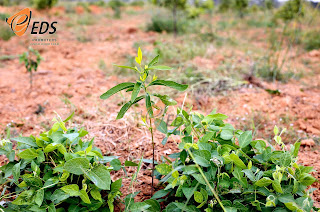Sandalwood as a prospective economic resource had played an important role in many of Krishnadevaraya’s (the famous ruler of Vijayanagara Dynasty) expeditions to different parts of the Deccan during the early part of the 16th century13. Tippu Sultan who ruled the Kingdom of Mysore had declared sandalwood tree as a royal tree and took over sandalwood trade of the state on a mono-poly basis around 1792 (ref. 14). This practice was con-tinued by the later Maharajas of Mysore and subsequently by the Karnataka Government until recently. The extrac-tion and disposal of sandalwood came under the jurisdic-tion of the Forest Department in 1864. The classification of the sorted sandalwood into 18 classes was introduced in 1898 (ref. 15) (Table 1; Figure 2).
Nalwadi Krishnaraja Wodeyar (1884–1940) (aka Krishnaraja Wodeyar IV), whose period of sovereignty is often described as the Golden Age of Mysore, was instrumental in conceiving the idea of starting a sandal-wood oil factory. Outbreak of the World War I had a severe impact on the forest economy of Mysore due to discontinuation of the traditional export markets for san-dalwood. Out of 1313 tonnes of sandalwood offered for sale in 1914–15, only 70 tonnes could be disposed off. And the huge stock of unsold wood was fortuitously no-ticed by the Maharaja of Mysore, during his visit to the Forest Department at Sankey Road in Bengaluru in 1916. It dawned upon him that oil should be extracted from this stock to obtain a high value-added product. After discuss-ing this matter with the then Dewan of Mysore, M. Vis-vesvaraya and Alfred Chatterton, the first Director of Industries and Commerce of erstwhile State of Mysore, the first sample of sandalwood oil was extracted under the leadership of professors J. J. Sudbourough and H. E. Watson, scientists working at the Indian Institute of Sci-ence (IISc), Bengaluru16. After the successful operation, a sandalwood oil distillery was started in 1916 in the vici-nity of Sankey Tank, Malleswaram, Bengaluru. This unit was later shifted to Mysore in 1917 and eventually became the renowned Government Sandalwood Oil Fac-tory. The Mysore sandal oil gained international popular-ity for its fine quality.

Over 70 years ago, nearly 90% of the natural sandal-wood populations occurred in the southern part of Karna-taka and northern part of Tamil Nadu17. Excessive harvesting without replenishment of this invaluable re-source has substantially reduced the sandalwood industry, resulting in global shortage and soaring of market prices. Importantly, S. album has been categorized as ‘vulner-able’ by the International Union for Conservation of Nature (IUCN) in 1997. In Karnataka, sandalwood populations are sparse and devoid of larger girth classes; mature trees have been nearly vandalized. The major cause of the decline of sandalwood has been smug-gling.
The monopolistic rule on sandalwood had prevented anyone excepting the personnel of Forest Department to harvest and sell it. Unlike the situation with major com-mercial timber tree species such as teak, sal, pine, deodar, oak, acacia, eucalyptus, casuarina, willow and poplar in India, sandalwood stands out as one species for which no organized plantations have been established. Realizing the disadvantages of this rule and taking cognizance of the grim situation, the Governments of Karnataka and Tamil Nadu promulgated The Karnataka Forest (Amend-ment) Act 2001 and The Tamil Nadu Forest (Amendment) Act 2002 respectively. The former Act clearly stated that ‘every occupant or the holder of land shall be legally entitled to the sandalwood tree in his land’. At that point of time, the owners had no option but to sell sandalwood exclusively to the Forest Department. Presently, the Gov-ernment of Karnataka has authorized Karnataka Soaps and Detergents Limited and the Karnataka State Handi-crafts Development Corporation to buy sandalwood directly from the landowners20. Although the debate on the consequences of this amendment is outside the pur-view of this article, it has paved the way for encouraging community and private entrepreneurs to cultivate sandal-wood which is in great demand.
Courtesy : Sandalwood: history, uses, present status and the future
A. N. Arun Kumar*, Geeta Joshi and H. Y. Mohan Ram
Contact:
EDS Farms Private Limited
W101, 2nd Avenue, Anna Nagar ,
Chennai-600040, Tamilnadu.
044 45058348 | 42612288
info@edsfarms.com
www.edsfarms.com













